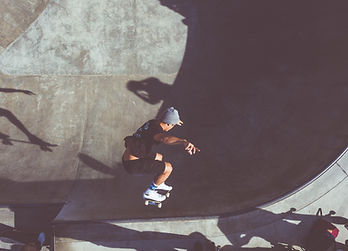FRIEZE LA
- Romy Kraus

- Jan 12, 2019
- 3 min read
Inaugural Frieze LA will see artists from Sarah Cain to Paul McCarthy "tangling with the dichotomy of artifice and reality"

A selection of artists, many based in L.A., have been invited to create site-specific artworks on Paramount Studios' New York backlot, where Frieze will launch its first fair in Los Angeles on Feb. 14 (through Feb. 17).
Through installation, sculpture and performance along the blocks, buildings and interior spaces that have for decades represented Hollywood’s vision of the Big Apple in hundreds of films and TV shows, artists will be "tangling with the dichotomy of artifice and reality."
Frieze Projects L.A., as this section of the fair is called, "will create an immersive art experience for visitors to explore this interplay."
The L.A. artists, and their galleries that are exhibiting at the February fair, are Barbara Kruger (Spruth Magers); Paul McCarthy (Hauser & Wirth); Sarah Cain (Honor Fraser); Karon Davis (Wilding Cran); Hannah Greely (Parker Gallery); Patrick Jackson (Ghebaly Gallery); Lisa Anne Auerbach (GAVLAK); and Trulee Hall (Maccarone ); Cayetano Ferrer and Kori Newkirk. Others include the Berlin-based Tino Sehgal and Catharine Czudej, based in New York.
Since the first Frieze fair in London in 2003, and each year as the fairs expanded to New York, Frieze Projects has invited artists — typically those represented by the fair's participating galleries — to create experimental work on the fair grounds or its immediate environs.
For this iteration of Frieze Projects, the curator is Ali Subotnick, a former curator of L.A.'s Hammer Museum. Subotnick, a Bay Area native who lived in New York for eight years and has been an Angeleno for more than a dozen, is well equipped to help the artists she picked explore the tensions between the two cities.
"The artists are all fascinated by how the movie business works because not many of them go behind the scenes like this," she says, adding this is true even for some who are local and may have a collector base in Hollywood. Subotnick took "the full two-hour studio tour with a few of the artists," she explains, "and that was very fun."
The artists were taken with two things in particular: "The one thing everyone loves is when the guide points out 'the Tom Cruise door' that looks exactly the same except one is much shorter, and how on the faux Washington Square, the windows get smaller as they get higher — it’s a false perspective," Subotnick says. "And just seeing it through artists' eyes — every time I go I see something different."
Subotnick is especially excited to work again with Sehgal after having done so earlier in the latter's career. Sehgal, whose MO is creating performative environments that challenge the public, is reprising and adapting a performance he originated more than 10 years ago. On the backlot’s ersatz Upper East Side, he will set up a competition between employees of his galleries from around the globe who will try to best one another to sell the artist’s work. "It's really engaging and people end up staying for quite a while to watch," Subotnick says.
On the residential side, Cain is creating a floor-to-ceiling painting and stained-glass installation in a brownstone-look building (her installation will also involve chocolate, one of the artist’s vices while painting). Auerbach will set up shop in an apartment as a "Psychic Art Advisor" offering individual counseling sessions on collecting and creativity.
Down the road, on a bespoke Brooklyn-look block, Greely will use an old-school clothesline to hang her paintings out to dry between the apartment buildings. Davis is using dramatically placed life-size sculptures as a way to explore violence in schools. In the backlot’s Soho, Hall’s serpent will snake in and out of a subway entrance and its surrounding landscape. Newkirk’s antennae sculptures will reference the obsolete method of broadcasting that defined the 20th century.
Czudej’s street sculpture will honor the below-the-line workers who bring movies, TV and even art fairs to life, while Jackson examines the classic trope of the ready-for-a rumble dark back alley in his artwork.

